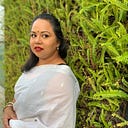Member-only story
How Women Are Faring in the World’s Largest Refugee Camp
Rohingya women are moving past the narrative of victimhood and emerging as leaders in the camps, despite resistance from the men

 On August 25, thousands of Rohingya refugees gathered under a relentless sun in Kuttapalong, the oldest refugee camp in Bangladesh, to commemorate the two-year anniversary of one of the most significant events in their turbulent history. More than 700,000 Rohingyas fled what the United Nations calls “ethnic cleansing” by the Burmese military over a period of several months, starting in August 2017. This year, the refugees gathered to hear two of their leaders, Mohib Ullah and Hamida Khatun. Both testified before the United Nations in Geneva earlier this year. Khatun has emerged as a female advocate for the Rohingyas — a rare commodity in a community where women are seldom broached as leaders.
On August 25, thousands of Rohingya refugees gathered under a relentless sun in Kuttapalong, the oldest refugee camp in Bangladesh, to commemorate the two-year anniversary of one of the most significant events in their turbulent history. More than 700,000 Rohingyas fled what the United Nations calls “ethnic cleansing” by the Burmese military over a period of several months, starting in August 2017. This year, the refugees gathered to hear two of their leaders, Mohib Ullah and Hamida Khatun. Both testified before the United Nations in Geneva earlier this year. Khatun has emerged as a female advocate for the Rohingyas — a rare commodity in a community where women are seldom broached as leaders.
A tender-faced woman in her fifties, Khatun stepped to the mic and addressed the crowd:
“Many NGOs have given us food and come to hear our stories, but we haven’t seen them do anything else for us. In 1978 and 1991, we told the world what was happening to us, but they didn’t hear us. What does the world want for us? To get our rights, now we, Rohingyas, have to work together.”

 The Bangladesh government currently houses more than 1 million refugees — almost twice as many Rohingyas who currently live in Myanmar — including migrants from earlier periods of conflict, in squalid camps.
The Bangladesh government currently houses more than 1 million refugees — almost twice as many Rohingyas who currently live in Myanmar — including migrants from earlier periods of conflict, in squalid camps.
In 1982, Myanmar’s Citizenship Law stripped the Rohingyas, a Muslim minority that has lived in Myanmar for centuries, of their right to vote; legally marry; obtain education, health care, and jobs; and travel freely between townships. Khatun arrived in Bangladesh in September 2017 to escape the severity of this statelessness. This was her second attempt to claim refugee status in her neighboring country. She’d escaped to Bangladesh with her family in the 1990s after a bout of violence erupted in her village. Bangladesh and Myanmar signed a bilateral agreement in 1992, and some Rohingya…

